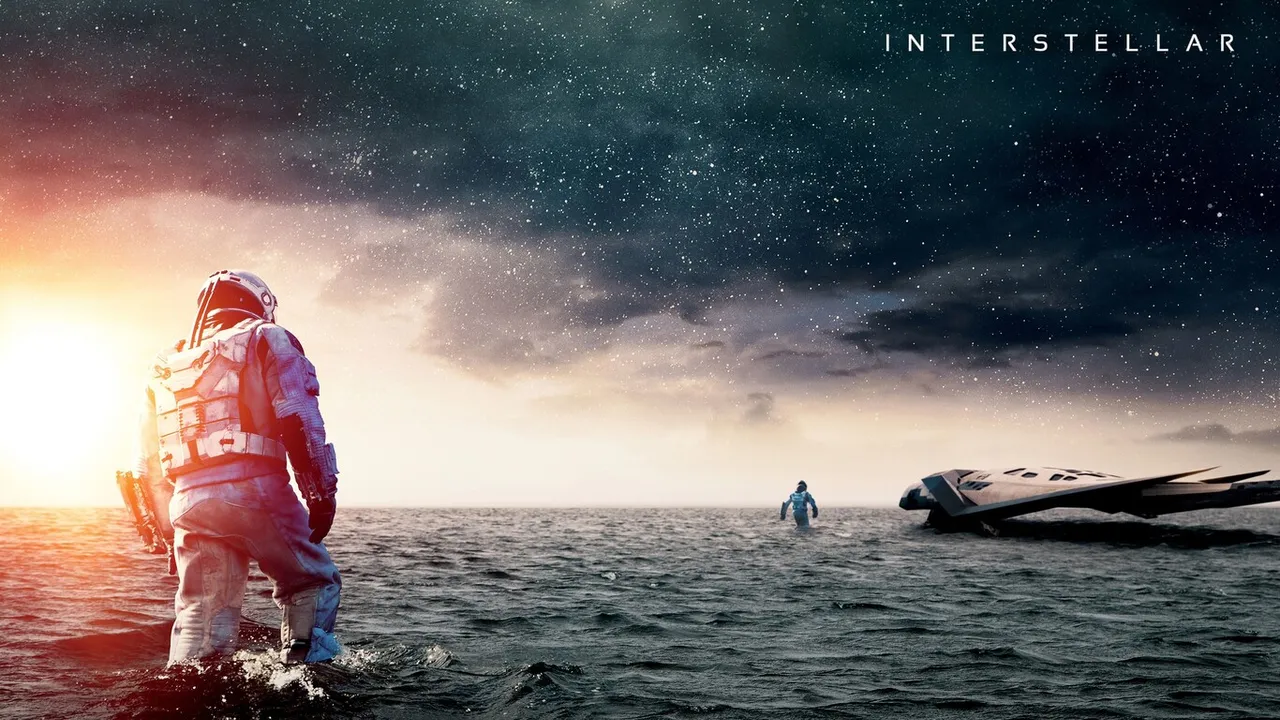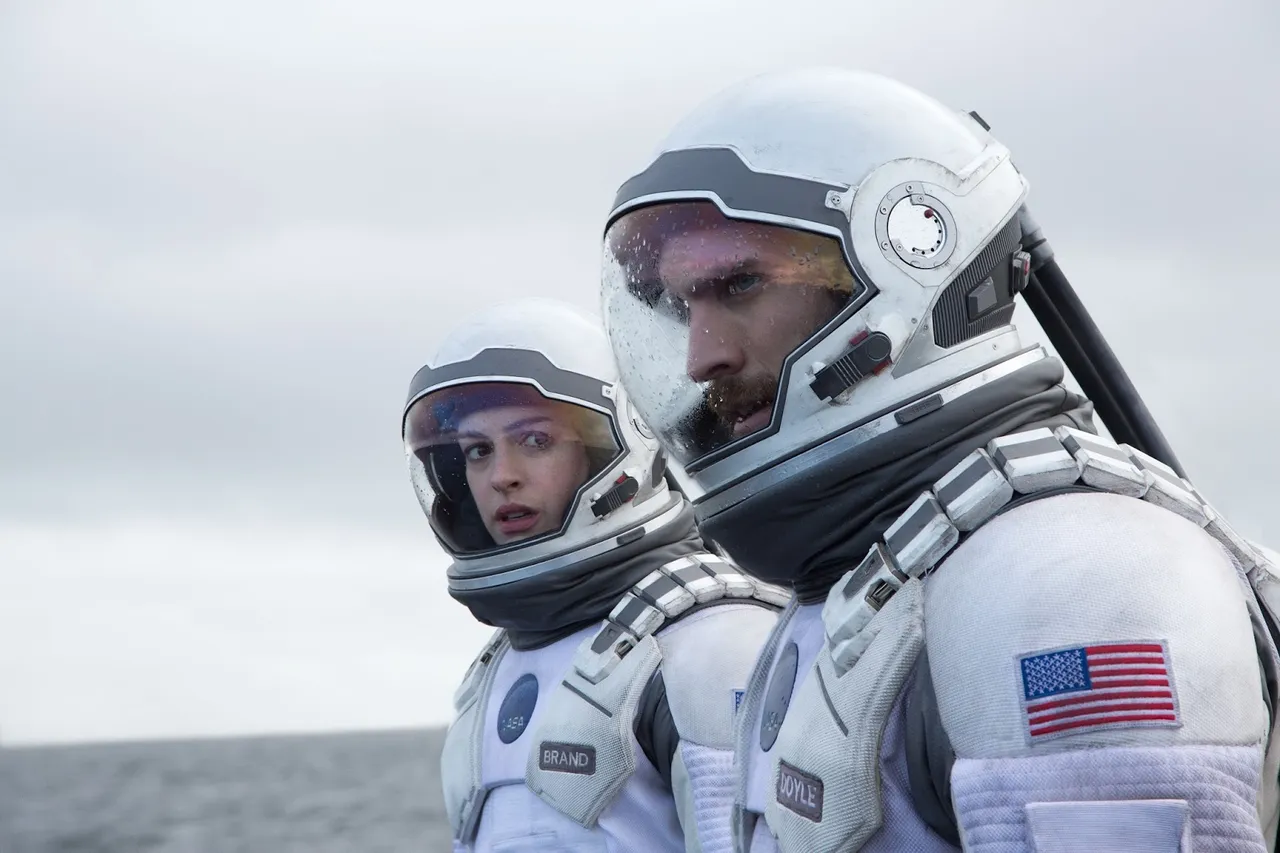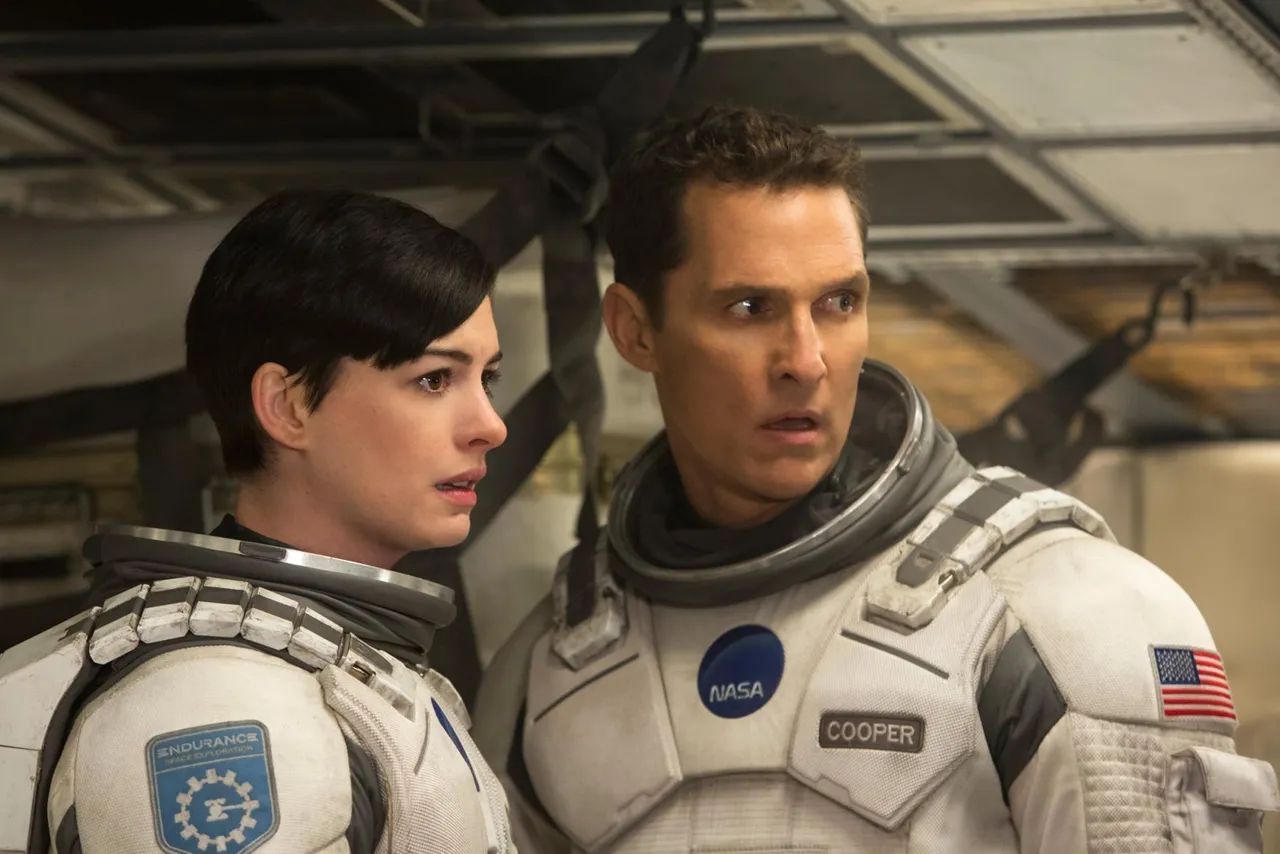
They say that love is something that does not understand about reasons. The same, which could be understood as: time, space, space-time, objective realities, or even dimensions. It is even poetic how a simple popular saying can be the fundamental premise, and at the same time masterful, of a cinematographic piece as incomparable as Interstellar. A film, which I am convinced has touched as many hearts, as the dimensions of a galaxy are intangible to the human mind, or as the time lag we experience as an expectant audience during the arrival, experience and exploration on Miller's planet (if you haven't seen the film, I recommend you stop right here and come back when you have seen it. Spoiler alert detected!).
In order to break down what Interstellar is as a feature film, we must necessarily take a brief look at productions related to outer space, or as I like to call them: astronomical films. So, where do we start? I think, without a doubt, by the one that, prior to our protagonist in today's post, had been the best film about technology, cosmology and science that had ever been screened in a cinema. I am referring, without fear of being mistaken, to the marvellous: 2001: A Space Odyssey, by the master Stanley Kubrick. More than a film, in Kubrick's work, the perfection, the obsession with scientific details is so palpable that it overwhelms. Although it is a film that is not for everyone, because it contains specialised elements for an audience that knows basic notions of astronomy, it is no less true that, even in the scientific argument that begins the story (the speculation of extraterrestrial life in the creation of humanity as an intelligent species, and the evolutionary leap) it is fascinating in itself, subtle but beautiful, like a masterfully written verse.
Now, "Odyssey into Space" was revolutionary because of the techniques of specific silences. In other words, emulating what actually happens in outer space, since there is no oxygen at all, the waves that carry sound have no natural "channel" to "travel" and therefore, such a thing as a sound is absolutely non-existent. Even this, I stress, to the detriment of the drama and support that sound itself provides to the story it is trying to tell. For Kubrick, making a film about science also goes hand in hand with physically supporting the experience of a journey into space. Not to mention the technological liberation of mankind's interstellar travel supported, almost exclusively, by the aid of computers (and the flip side, the terrible danger that comes to life for the AI within the film's own dual narrative). I enter into speculation here, but I am convinced that Mr. Kubrick was a connoisseur of a great cosmologist: Stephen Hawking. But that is another story...
Dicen que el amor es algo que no entiende sobre razones. Mismas, que podrían entenderse como: tiempo, espacio, espacio-tiempo, realidades objetivas; u, incluso; dimensiones. Es hasta poético como un simple refrán popular puede ser la premisa fundamental, y al mismo tiempo magistral, de una pieza cinematográfica tan inigualable como Interstellar. Una película, que estoy convencido ha tocado tantos corazones, como intangible son las dimensiones de una galaxia para la mente humana, o como el desfase temporal que experimentamos como audiencia expectante durante la llegada, vivencia y exploración en el planeta de Miller (si no has visto el film, te recomiendo que te detengas justo aquí y regreses cuando la hayas visto. Spoiler alert detected!).
Y es que, para poder desglosar lo que Interstellar es como largometraje, necesariamente hay que hacer un pequeño repaso a las producciones relacionadas con el espacio exterior, o como a mi me gusta denominarlas: películas astronómicas. Ahora bien, ¿por dónde empezamos? Creo que sin lugar a dudas, por la que, previa a nuestra protagonista en el post de hoy, había sido la mejor película sobre tecnología, cosmología y ciencia, que había sido proyectada en una sala de cine. Me refiero, sin temor a equivocarme a la maravillosa: 2001: Odisea al Espacio, del maestro Stanley Kubrick. Más que una película, en la obra de Kubrick, la perfección, la obsesión con los detalles científicos es tan palpable que abruma. SI bien, es una film que no es para todos, porque contienen elementos especializados para una audiencia que conozca nociones básicas de astronomía, no menos cierto es que, incluso en el argumento científico que da inicio a la historia (la especulación de vida extraterrestre en la creación de la humanidad como especie inteligente, y el salto evolutivo) es de por sí fascinante. sútil pero hermosa, como un verso escrito con maestría.
Ahora bien, "Odisea al Espacio" fue revolucionaria por las técnicas de silencios específicos. Dicho de otro modo, emulando lo que realmente sucede en el espacio exterior al carecer enteramente de oxígeno, las ondas que transporta el sonido no tienen un "canal" natural para "viajar" y por tanto, tal cosa como un sonido, es absolutamente inexistente. Incluso, ésto que recalco, en detrimento del drama y el apoyo que brinda de por sí el mismo sonido a la historia que se intenta contar. Para Kubrick, hacer una película sobre ciencia también va de la mano con apoyar físicamente la experiencia de un viaje al espacio. Y ni hablar de la liberación tecnológica que representa el hecho de que la humanidad realice viajes interestelares apoyada, casi exclusivamente con la ayuda de las computadoras (y la otra cara, el terrible peligro que cobra vida sobre la IA dentro del mismo relato dual en la película). Entro en especulación aquí, pero estoy convencido de que el señor Kubrick era un entendedor de un gran cosmólogo: Stephen Hawking. Pero ésa es otra historia...

Gravity, by Alfonso Cuarón, what a drama, right? Unbelievable. What the very talented Mexican director, writer, producer and producer achieved is simply perfect. Let's remember that in this film, the only scene on Earth (yes, on the planet we live on) is at the end of the film. It is minutes and minutes of tension, humanity on the surface, and a leap of diverse emotions, around an Earth orbit. Accompanied by a group of NASA astronauts who are on an ordinary mission to repair, some, and study, others, inside the International Space Station. And here we go again, the technological-scientific specificity to exemplify through the senses what the vacuum of space is really like, a marvel truly difficult to put into words. Obviously, all following the example bequeathed by Stanley in 2001: A Space Odyssey.
On the other hand, now I begin with what for me is the most incredible thing about Interstellar and what distinguishes it from all the films, sagas, series, shorts, and animations that exist within the genre of astronomical films; and I am referring to the premise of love and love. Although they may seem synonymous, they are not necessarily the same thing. Note to self. In this sense, the purely technical aspects, of special effects and scientific-theoretical precision, deserve a separate post. Because none other than Kip Thorne, a notable theoretical physicist in the field of supermassive black holes, advised the photography, design and special effects team on this film. In addition, he openly collaborated with the director himself (Christopher Nolan) to find the key to the multiple time lags and the correctness of the dimensions of the astronomical phenomena in the film.
However, Dr. Brand, for me, has hit the nail on the head in a way that perhaps no one else has ever done before. This character in the film's plot exclaims a phrase for posterity: "Love is the only human thing that can transcend time and space itself. Look carefully, (continues the doctor) we love people who have died, long after they have died. Why? We don't know, but it is there, and that is a powerful force...". Dear readers, if you have seen and felt the same as I did in Interstellar, in this precise part that I relate to you by way of homage and with deep admiration, please, I ask you; leave it in the comments to initiate a magnificent debate on this philosophical but above all anthropological argument promoted with majesty within the film.
Gravedad, de Alfonso Cuarón, ¡vaya drama! ¿Cierto? Increíble. Lo que logró el talentosísimo director, escritor, productor, mexicano es sencillamente perfecto. Recordemos, que en esta cinta, la única escena en La Tierra (sí, en el planeta en que vivimos) es al final de la película. Son minutos y minutos de tensión, humanidad a flor de piel, y un sobre salto de emociones diversas, alrededor de una órbita terrestre. Acompañados de un grupo de astronautas de la NASA que están de misión ordinaria para reparar, algunos, y estudiar, otros, dentro de la Estación Espacial Internacional. Y aquí vamos de nuevo, la especificidad tecnológico-científica para ejemplificar a través de los sentidos cómo realmente es el vacío del espacio, una maravilla realmente difícil de poner en palabras. Obviamente, todos siguiendo el ejemplo legado por Stanley en 2001: Odisea al espacio.
Por otro lado, ahora sí doy inicio con lo que para mí es lo más increíble que tiene interstellar y que la hace distinguirse de todas las películas, sagas, series, cortos, y animaciones que existen dentro del género de películas astronómicas; y me refiero a la premisa del amor y el amar. Que aunque parezcan sinónimos, no necesariamente son lo mismo. Ojo al dato. En este sentido, los aspectos netamente técnicos, de efectos especiales y de precisión científica-teórica, merecen un post aparte. Porque nada más y nada menos que Kip Thorne, un notable físico teórico en materia de agujeros negros supermasivos, asesoró al equipo de fotografía, diseño y efectos especiales en esta película. Además, de colaborar abiertamente con el propio directoR (Christopher Nolan) para dar con la clave dentro de los múltiples desfases temporales y acierto en cuanto a las dimensiones de los fenómenos astronómicos dentro del film.
No obstante, la doctora Brand, para mí ha dado enteramente en el clavo, como quizás nadie jamás lo haya hecho. Y es que, este personaje dentro del argumento del film exclama una frase para la posteridad "El amor es la única cuestión humana que puede trascender el tiempo y el espacio en sí mismos. Fíjense bien, (continúa la doctora) amamos a personas que han muerto, muchísimo después de haber fallecido ¿Por qué? No lo sabemos pero ahí está y esa es una fuerza poderosa..." Queridos lectores, si han visto y sentido lo mismo que yo en Interstellar, en esta parte precisa que les relato a modo de homenaje y con profunda admiración, por favor, se los pido; déjenlo en los comentarios para iniciar un debate magnífico sobre este argumento filosófico pero sobre todo antropológico promovido con majestuosidad dentro de la película.

Amelia, (Dr. Brand's first name, and also an essential character to understand everything) continues with her argument, while rhetorically the male protagonist of the story, and great hero, Cooper, rhetorically points out that his objective judgement of going to a certain planet, where his past love (in this case Eros, not platonic) has previously landed, has clouded his judgement and lacks objectivity, directing, as Mission Commander, the crew to the most famous planet in astronomical movies that exists: Miller's planet, Matt Damon, who is Miller, an amazing pioneering scientist and key genius of previous missions to save mankind, has landed unsuccessfully on a planet far removed from Gargantua, or otherwise explained, from the supermassive hole that engulfs a dying star, but which is too far from the event horizon to harbour life, but not too far away to make time relative to what we perceive on Earth pass up to seven times faster. As the now famous phrase goes, "...Remember boys, seven years for every hour, seven years!".
An unforgettable and astonishing epithet, which corresponds to the time-space lag caused by the crushing proximity of Miller's planet to Gargantua, the huge supermassive hole from which this planet spins without being able to escape its enormous gravitational force of attraction. And which again, brings us the concern of a father who loves his children too much to miss out on most of their lives, as terribly, and in effect, ends up happening. Obviously, all this provoked by the dystopian chaos in which the whole of humanity finds itself at the beginning of the film, where a gigantic dust cloud slowly devours the planet, sunlight and life as we know it; which inspires the already unforgettable: Lazarus Missions, co-captained by the genius of Dr. Miller, and Dr. Brand, a genius who cannot relate the theory of quantum physics to Einstein's special relativity, and through an object detected in the vicinity of Saturn, (an Einstein-Rossen hole) humanity seems to "have a helping hand" from an undetectable "invisible hand" that seems bent on helping life on Earth not to become extinct.
Continúa Amelia, (nombre de pila de la doctora Brand, y además, un personaje esencial para entender todo) con su argumento, mientras de forma retórica el protagonista masculino de la historia, y gran héroe, Cooper, retóricamente señala que su juicio objetivo de ir hacia un determinado planeta, donde previamente ha aterrizados su pasado amor (en este caso Eros, no platónico) ha nublado su juicio y carece de objetividad, dirigiendo, cual Comandante que es de la Misión a la tripulación hacia el planeta más famoso dentro de las películas astronómicas que existe: el planeta de Miller, Ojo al dato, Matt Damon, quien es Miller, un asombroso científico pionero en genio clave de previas misiones para salvar a la humanidad, dentro del pasado de la historia, ha aterrizado sin éxito en un planeta muy alejado de Gargantúa, o explicado de otro modo, del agujero supermasivo que engulle a una estrella moribunda, pero que está demasiado lejos del horizonte de eventos como para albergar vida, pero no demasiado para hacer que el tiempo en relación a lo que percibimos en La Tierra pase hasta siete veces más ràpido. Como dice, la ya célebre frase, "...¡Recuerden muchachos, ¡siete años por cada hora, siete años!".
Un epíteto inolvidable y asombroso, que corresponde con el desfase de tiempo-espacio provocado por la cercanía aplastante del planeta de Miller ante Gargantúa, el agujero supermasivo enorme desde donde éste planeta gira sin poder escapar de su enorme fuerza gravitatoria de atracción. Y que de nuevo, nos trae la preocupación de padre que ama demasiado a sus hijos como perderse la mayoría de sus vidas, como terriblemente, y en efecto, termina ocurriendo. Obviamente, todo esto provocado por el caos distópico en el que se encuentra la humanidad entera al inicio del film, donde de a poco una nube de polvo gigantesca devora al planeta, la luz solar y la vida como la conocemos; lo que inspira las ya inolvidables: Misiones Lázaros, co capitaneadas por el genio del doctor Miller, y el doctor Brand, un genio que no puede relacionar la teoría de la física cuántica con la relatividad especial de Einstein, y que a través de un objeto detectado en las proximidades de Saturno, (un agujero Einstein-Rossen) la humanidad parece "tener una ayuda" de una "mano invisible" e indetectable que parece empeñada a ayudara que no se extinga la vida en La Tierra.

There are those who measure the success of a film by the number of statuettes and awards it is able to collect during the awards season in the different places where cinema goes hand in hand with the red carpets; Interstellar, although it won several awards, which I will not highlight here, will not necessarily be remembered for not winning "Best Picture" at the 2015 Academy Awards but for how impossible it is not to be moved by a story of love, science, a lot of science, but above all humanity. And about a very Freudian relationship, the father-daughter relationship or Electra syndrome. To put it quite simply, it could be the equivalent of the Oedipus syndrome in men (mother-son) but in the opposite direction (father-daughter). I am convinced that it is impossible not to be empathetic and at the same time, unable to hold back tears of sadness at seeing Coop realise how time has passed, as he looks at his children through the recorded messages inside the spaceship, once off Miller's planet.
This is not a story, a la The Martian or Star Wars (which are majestic and incredible in their own right) where there is an all-powerful villain or hero, even if certain parallels are found. However, love for others is the greatest dimensional and evolutionary engine ever seen, as well as intangible, immeasurable and utterly transcendental. 7 years have passed since the premiere of Interstellar in cinemas worldwide, the same years, that for every hour, the protagonists of this film spent on a truly impossible planet, only to save a humanity that doesn't even remember them. I hope you understand that last reference, it is quite simple but dedicated only to true admirers of this unparalleled masterpiece.
Hay quienes miden el éxito de una obra cinematográfica en función del valor de estatuillas y galardones que es capaz de reunir durante la temporada de premios en los distintos lugares donde el cine va de la mano con las alfombras rojas; Interstellar, si bien ganó varios premios, que no me voy a poner a destacar aquí, no necesariamente será recordada por no haber ganado en la categoría de "mejor película" en los Academy Awards del 2015 sino por lo imposible que es no conmoverse con una historia de amor, ciencia, mucha ciencia, pero humanidad ante todo. Y sobre una relación muy freudiana, la relación padre-hija o síndrome de Electra. Que para hacerla bastante pero bastante simple, podría ser el equivalente al síndrome de Edipo en los hombres (madre-hijo) pero en sentido contrario (padre-hija). Estoy convencido que es imposible no ser empático y al mismo tiempo, no poder frenar las lágrimas de tristeza por ver a Coop darse cuenta cómo ha pasado el tiempo, mientras mira a sus hijos a través de los mensajes grabados dentro de la nave espacial, una vez fuera del planeta de Miller.
Esta no es una historia, a lo The Martian o Star Wars (que son majestuosas e increíbles en sí mismas) donde hay un villano o un héroe todopoderoso, incluso si se encuentran ciertos paralelismos. Sin embargo, el amor por los demás es el motor dimensionador y evolutivo más grande jamás visto, al igual que intangible, inmedible y completamente trascendental. 7 años han pasado desde el estreno de Interstellar en las salas de cine mundiales, mismos años, que por cada hora, pasaron los protagonistas de esta película en un planeta realmente imposible, solo para salvar a una humanidad, que ni les recuerda ¿Moraleja? "Los padres no deberían ver jamás morir a sus hijos, sino al revés". Espero que entiendan esa última referencia, está bastante sencilla pero dedicada solo para verdaderos admiradores de esta obra maestra sin igual.
